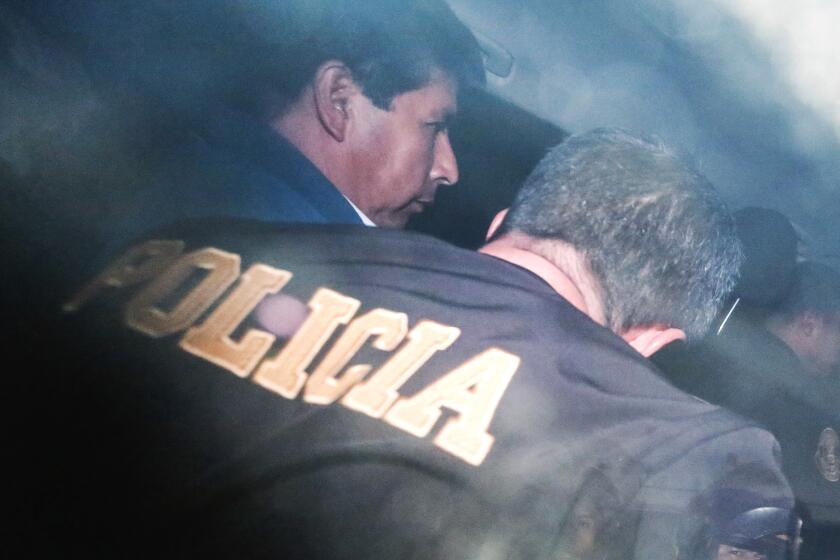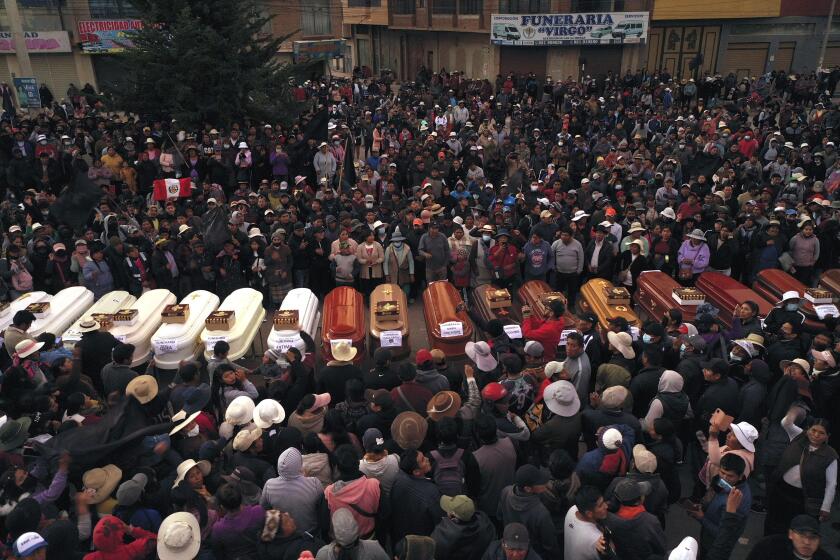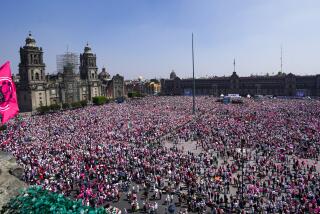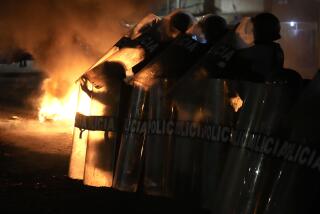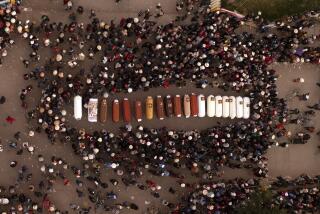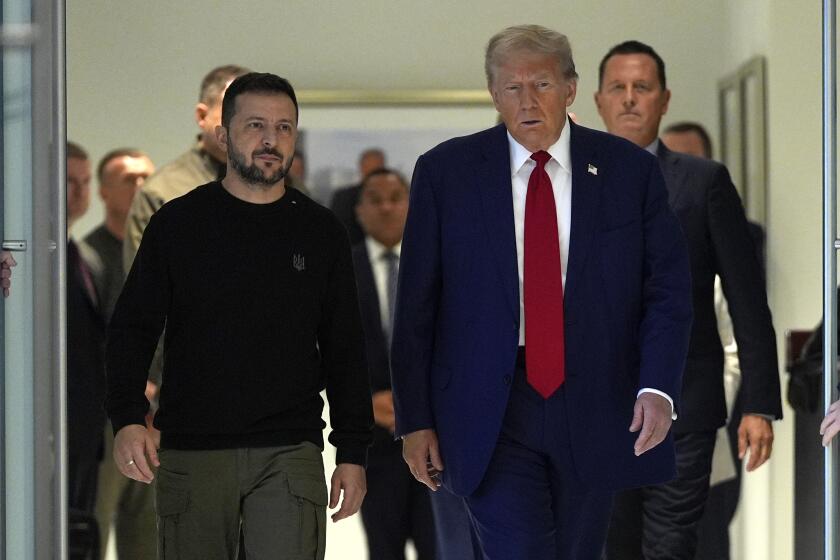Anti-government protests in Peru that have left 47 dead spread into Cuzco
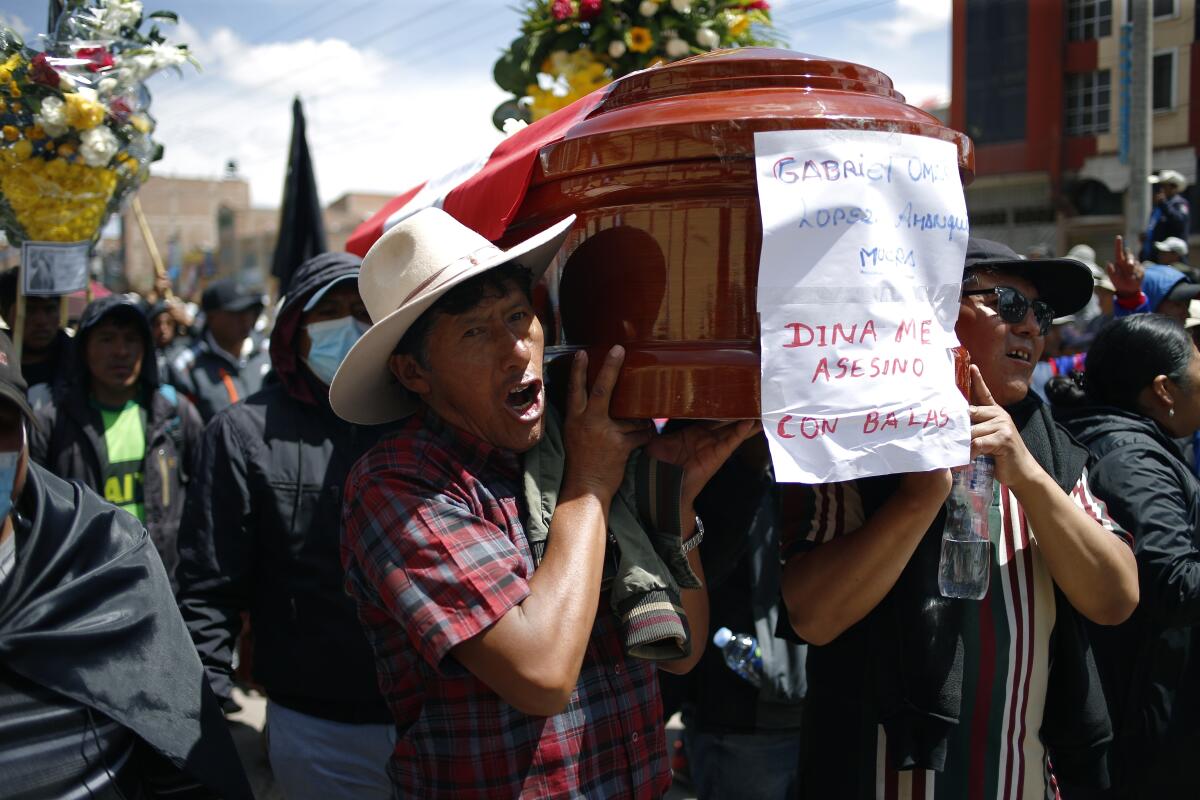
LIMA, Peru — Protests against Peruvian President Dina Boluarte’s government that have left 47 people dead since they began a month ago spread through the south of the Andean country on Wednesday with new clashes reported in the tourist city of Cuzco.
Health officials in Cuzco said 16 civilians and six police officers were injured after protesters tried to take over the city’s airport, where many foreign tourists arrive to see sites including the nearby Incan citadel of Machu Picchu.
Protests and road blockades against Boluarte and in support of ousted President Pedro Castillo were also seen in 41 provinces, mainly in Peru’s south.
The unrest began in early December after the arrest of Castillo, Peru’s first president of humble, rural roots, following his widely condemned attempt to dissolve Congress and head off his own impeachment.
While democratic elections are held regularly in Peru, critics say that the results often have more to do with settling scores and politicians getting rich than installing effective governments.
The protest, mainly in neglected rural areas of the country still loyal to Castillo, are seeking immediate elections, Boluarte’s resignation, Castillo’s release and justice for the protesters killed in clashes with police.
Some of the worst protest violence came Monday when 17 people were killed in clashes with police in the city of Juliaca near Lake Titicaca. Protesters later attacked and burned a police officer to death.
Peru’s Ombudsman’s Office said 39 civilians have been killed in clashes with police and seven others died in traffic accidents related to road blockades, as well as the police officer who authorities said burned to death in his patrol car.
The slaying of an officer on patrol came after the killing of 17 people in Juliaca, Peru, in antigovernment protests that have rocked the country.
Peru’s government has announced a three-day curfew from 8 p.m. to 4 a.m. in Puno.
The national prosecutor’s office has opened an investigation into Boluarte and other officials for the protest deaths.
In Juliaca, in Puno region, a crowd marched alongside the coffins of the 17 people killed in Monday’s protests.
“Dina killed me with bullets,” said a piece of paper attached to the coffin of Eberth Mamani Arqui, in a reference to Peru’s current president.
“This democracy is no longer a democracy,” relatives of the victims chanted.
As they passed a police station, which was guarded by dozens of officers, the marchers yelled, “Murderers!”
Meanwhile, a delegation from the Inter-American Commission on Human Rights began a visit to Peru to look into the protests and the police response.
Boluarte was Castillo’s former running mate before taking over the presidency. She has said she supports a plan to push up to 2024 elections for president and congress originally scheduled for 2026. She’s also expressed support for judicial investigations into whether security forces acted with excessive force.
But such moves have so far failed to quell the unrest, which after a short respite around the Christmas and New Year’s holidays has resumed with force in some of Peru’s poorest areas.
Castillo, a political novice who lived in an adobe home in the Andean highlands before moving to the presidential palace, eked out a narrow victory in 2021. The election rocked Peru’s political establishment and laid bare the deep divisions between residents of the capital, Lima, and the long-neglected countryside.
More to Read
Sign up for Essential California
The most important California stories and recommendations in your inbox every morning.
You may occasionally receive promotional content from the Los Angeles Times.
